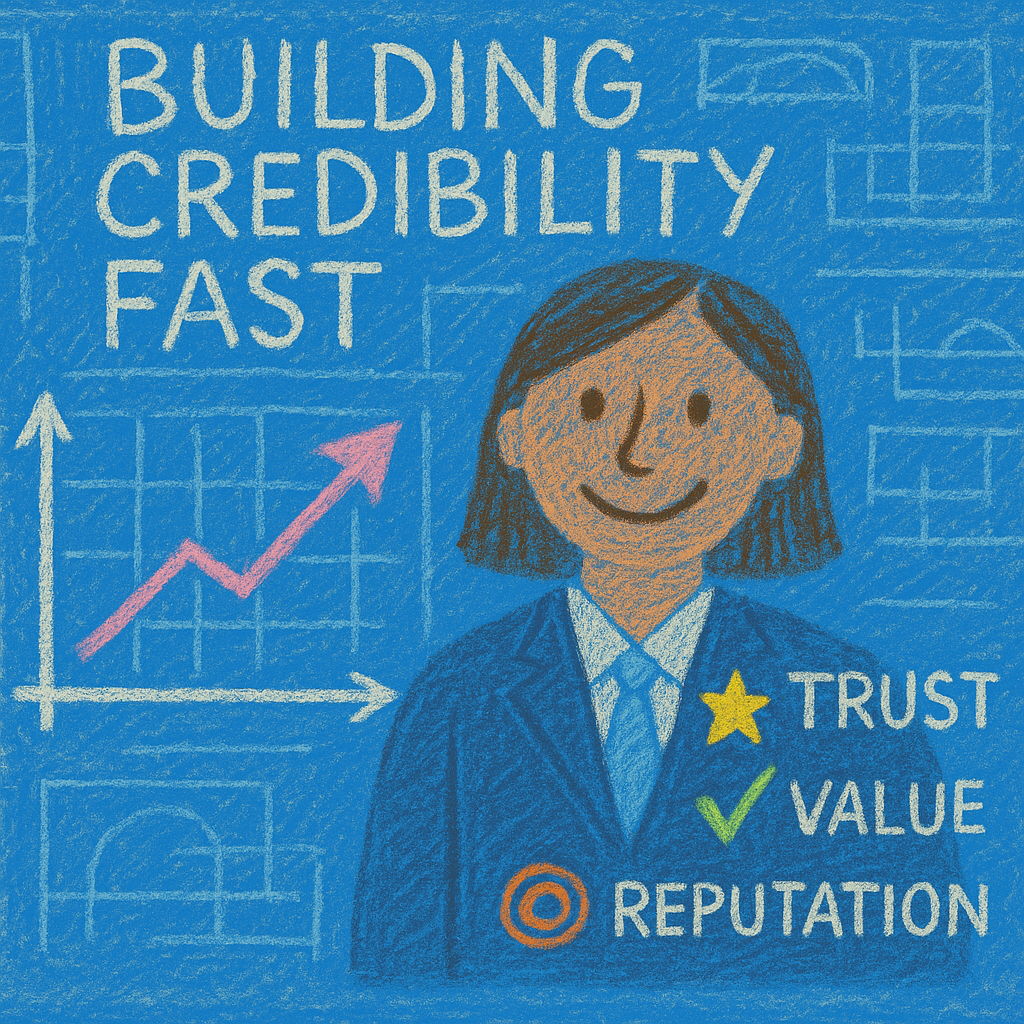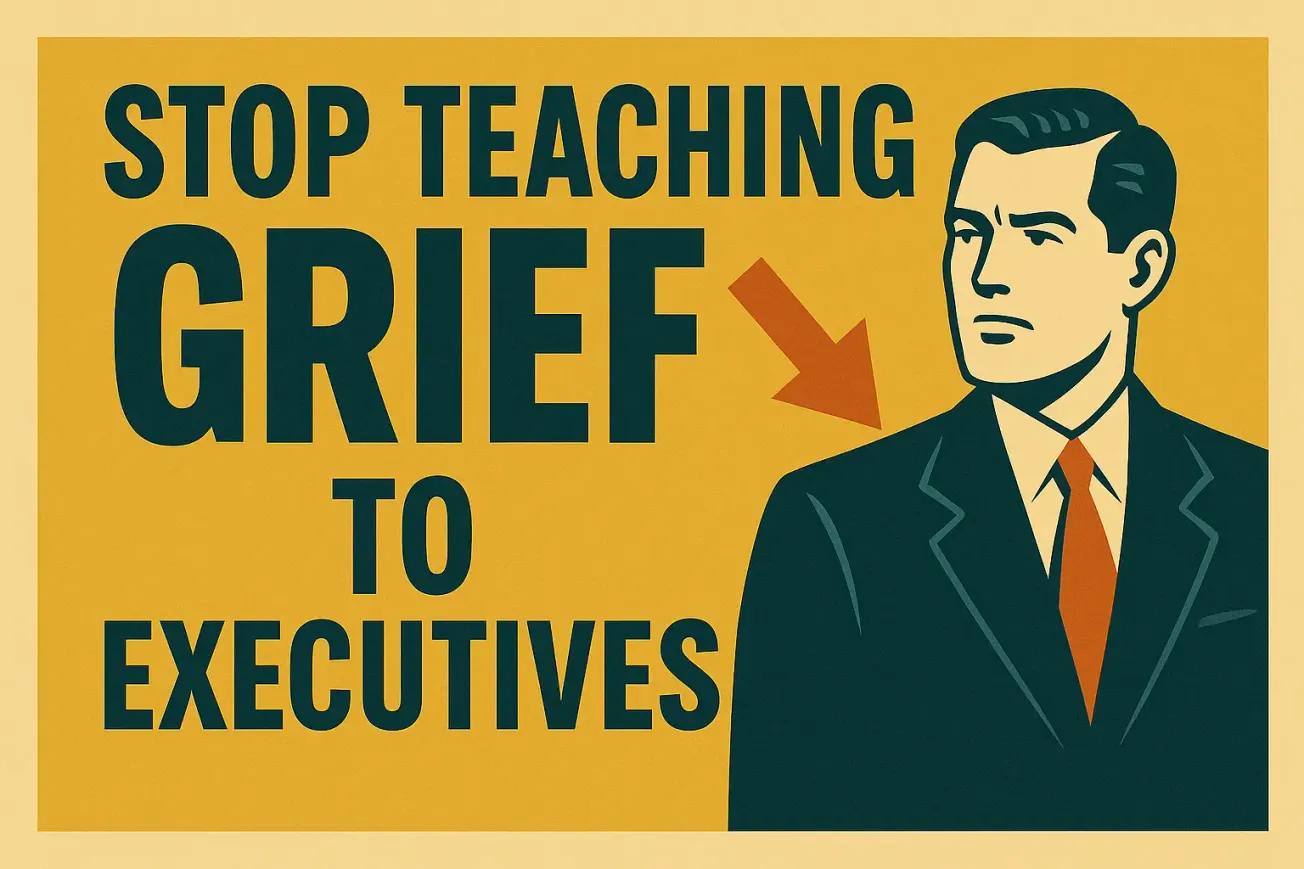The change curve has become a staple in the organizational change toolkit. Originally rooted in the Kübler-Ross model of grief, it’s often trotted out in executive briefings as a way to explain resistance, denial, and emotional responses to change. But here’s the problem: executives don’t need to be taught grief. They need to understand adoption risk, organizational friction, and the levers they can pull to drive business results.
If you want leaders to take change seriously, stop giving them therapy slides and start speaking to what matters in their world - speed, outcomes, alignment, and risk. Emotion is real, but it’s not a business case. Framing resistance through a therapeutic lens may create empathy, but it rarely creates urgency.
The Problem with the Curve
The change curve is not inherently wrong - but it’s often misused, misapplied, or misdirected.
- It centers emotion over action. Leaders are asked to empathize instead of strategize.
- It oversimplifies behavior. Complex stakeholder dynamics are reduced to a linear, predictable progression.
- It assumes a passive leader role. As if executives are bystanders in the emotional processing of others.
- It can infantilize stakeholders. When we assume people must follow a pre-scripted path of denial, frustration, and acceptance, we overlook nuance and agency.
That’s not how modern business works. Executives are under pressure to produce results, navigate risk, and align teams. The faster you connect change to those imperatives, the more likely you are to earn a seat at the table. Change management isn’t a side conversation. It’s a business conversation.
What Executives Actually Need
Executives don’t need a grief model - they need a strategic lens for managing disruption.
- Adoption Risk: Who will be slow to change, and how will that affect KPIs?
- Friction Points: Where are the bottlenecks, silos, or decision-making gaps?
- Role Alignment: Are sponsors positioned to influence where it matters?
- Behavior Visibility: What will be observable when the change is working?
- Impact Forecasting: What are the measurable downstream consequences if this change stalls or gets partial adoption?
These are the questions that make sense to leaders. They align with how decisions are made, how performance is tracked, and how accountability is enforced. When you frame change in terms of operational risk, performance enablement, and behavioral traction, you’re speaking their language.
Shift the Conversation
Instead of walking into the room with a curve, come in with:
- A clear picture of who is lagging in adoption and why it matters
- A risk map showing business impact if behavior does not shift
- A sponsor activation plan tied to outcomes, not awareness sessions
- A crisp narrative on how this change supports revenue, compliance, efficiency, or innovation
- A short list of critical behavior shifts needed at each level of the organization - with clear accountability and observable outcomes
Executives don’t need to understand emotions. They need to understand what happens when adoption fails. When they see risk and opportunity clearly, they move. That’s how you anchor change in strategy, not sentiment.
Use Your Tools Strategically
The change curve can still serve a purpose - in coaching, training, or communication. It’s useful in helping middle managers understand the people side of change. It’s a solid empathy tool when someone is going through uncertainty. But when working with the executive team, treat it like any other tool: use it if it serves a business outcome. Leave it behind when it doesn't.
Leading change is not about empathy theater. It’s about enabling decisions and behaviors that shift results. The more you position change work as strategic enablement, the more seriously you’ll be taken.
Real Talk: I’ve Been in That Executive Room
Over the years, I’ve learned this the hard way: executives don’t dismiss change management because they don’t care - they dismiss it because it doesn’t sound like strategy. When you show up with language they already use to make decisions - risk, performance, momentum, alignment — you don’t have to fight for relevance. You earn it.
Final Thought: Translate, Don’t Simplify
Change practitioners are translators, not therapists. Your job is to bridge human dynamics with business performance. Meet leaders where they are - and take them somewhere that matters.
Postscript
This piece isn’t a dismissal of empathy - it’s a call to match it with strategic clarity. Emotional awareness is foundational in change, but it’s not always the language that gets leaders to move. If this perspective challenges you or raises questions, good. Let’s talk about it. What do you think? Where do we draw the line between empathy and enablement?
ChangeGuild: Power to the Practitioner™
Related Reading
If you enjoyed this article, you might also find these helpful:



Tired of being sidelined as the soft skills person?
We help change practitioners speak in terms executives respect - risk, performance, and measurable outcomes. Whether you’re coaching leaders or repositioning your own role, we’ll help you move from empathy to impact.
Book a discovery call to shift your change conversations to the strategy table.











